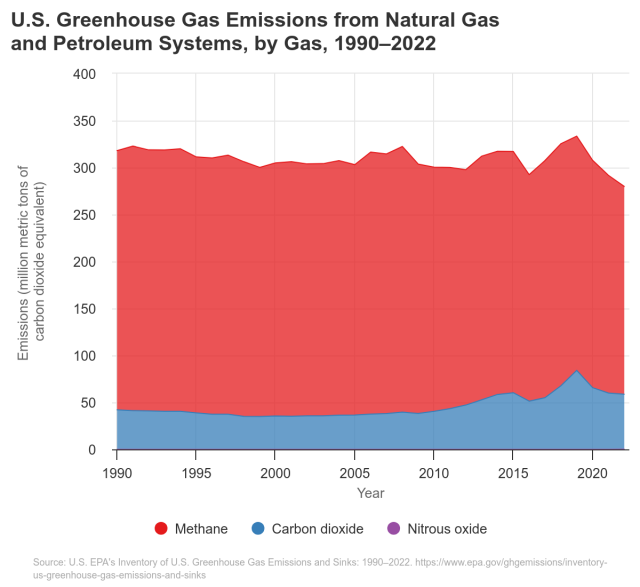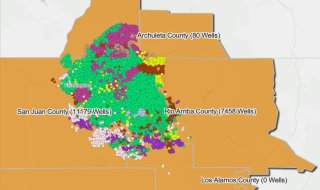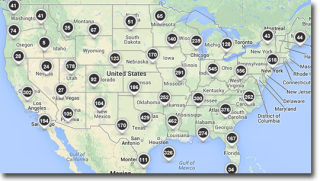Methane Emissions Data
- Total Methane Emissions from the Oil and Gas Sector
- Emissions from Industry Segments and Sources
- Methane Emission from Specific Facilities
- Other Tools and Resources about Methane Emissions Data
Total Methane Emissions from the Oil and Gas Sector
EPA develops an annual report called the Inventory of U.S. Greenhouse Gas Emissions and Sinks, that tracks U.S. greenhouse gas emissions and sinks by source, economic sector, and greenhouse gas going back to 1990. This includes information from Petroleum and Natural Gas Systems.

GHGRP Reported Emissions from the Oil and Gas Sector
One of the primary inputs for calculating greenhouse gas emissions from the oil and gas sector in the national greenhouse gas inventory is the Greenhouse Gas Reporting Program (GHGRP). The GHGRP specifies reporting requirements for a wide range of greenhouse gas emission sources and entities, including 11 industry segments within the oil and gas sector. It requires affected owners or operators to collect greenhouse gas data, calculate greenhouse gas emissions, and follow the specified procedures for quality assurance, missing data, recordkeeping, and reporting. Reported data are made available to the public in October of each year.
GHGRP data from the oil and gas sector can be used by businesses and others to track and compare facilities' greenhouse gas emissions, identify opportunities to cut pollution, minimize wasted energy, and save money. The GHGRP Oil and Gas Dashboard displays trends in EPA’s GHGRP Subpart W reporting data from reporting year (RY) 2016 to RY 2023. The graph from the dashboard below shows trends in oil and gas sector methane emissions by industry segment from 2016 to 2023.
- Access GHGRP Sector Data Highlights for the oil and gas sector
- Learn about how the GHG Inventory calculates emissions for the oil and gas sector
Emissions from Industry Segments and Sources

Data from the GHGRP Oil and Gas Dashboard can be filtered by industry segment or emissions source. GHGRP also provides StoryMaps to help explain how emissions data from different industry sectors and segments are reported to GHGRP. This includes oil and gas industry segments such as onshore production wells, transmission pipelines, and local distribution companies.
Methane Emissions from Specific Facilities

EPA’s Facility Level Information on GreenHouse gases Tool (FLIGHT) provides maps, charts, and tables to quickly and easily filter greenhouse gas data reported to the GHGRP in a variety of ways, including by facility, industry, location, or gas. Filters can be used to only view emissions for methane from facilities in the Petroleum and Natural Gas Systems sector. This data is updated on an annual basis.
Explore facility data in FLIGHT
Other Tools and Resources about Methane Emissions Data
In addition to the resources described here, GHGRP produces other resources like tools, profiles, fact sheets, and more on specific topics of interest to help the public use and derive value from the greenhouse gas data.
EPA also maintains the Non-CO2 Greenhouse Gas Data Tool to view greenhouse gas projections and mitigation assessments around the world. Filters can be used to explore emissions or mitigation assessments for methane across different sectors, including Oil and Natural Gas Sectors.
